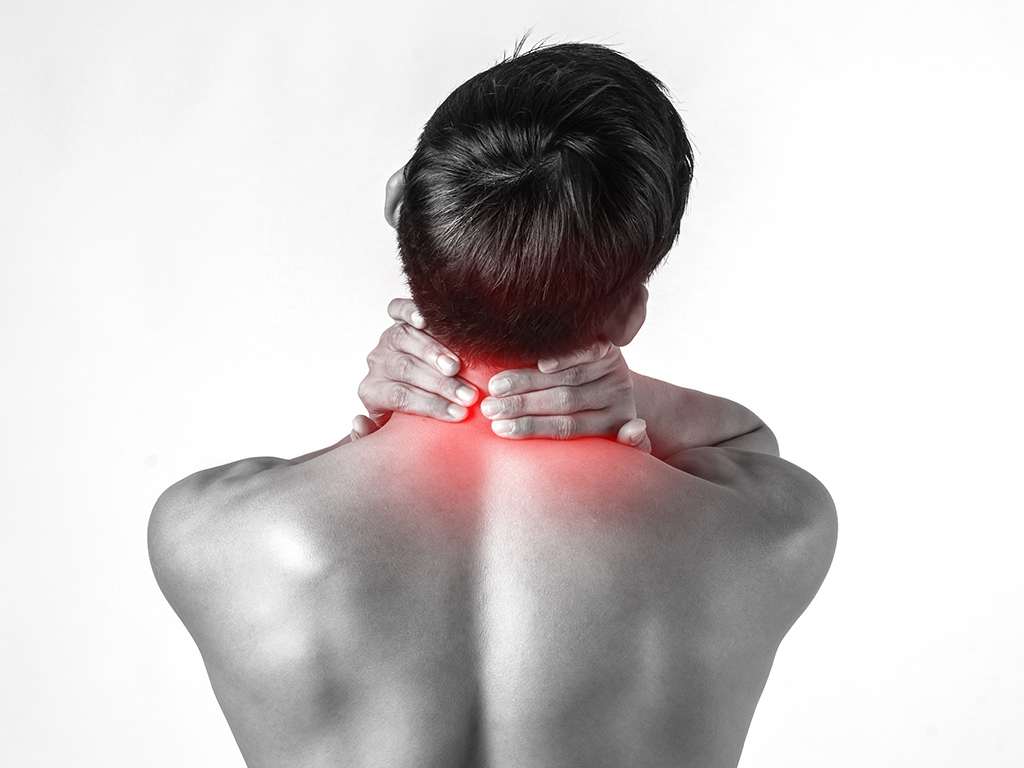Do you have a pain in your neck that just won’t go away? You might be suffering from trapezius pain. This condition is caused by muscle tension and can be very painful. In this blog post, we will discuss the causes of trapezius pain, the treatment options available, and how to prevent it from happening again.
Contents
- 1 What Is Lower Trapezius Pain?
- 2 What Does A Trapezius Pain Feel like?
- 3 What Causes A Trapezius Pain?
- 4 Treatment Options
- 4.1 Physical therapy
- 4.2 Massage
- 4.3 Acupuncture
- 4.4 Chiropractic
- 4.5 Surgery
- 4.6 Medication
- 4.7 Ice
- 4.8 Pain relievers
- 4.9 Heat
- 4.10 Ultrasound
- 4.11 Electrical stimulation
- 4.12 Biofeedback
- 4.13 Cognitive behavioral therapy
- 4.14 Exercise
- 4.15 Relaxation techniques
- 4.16 Ergonomic improvements
- 4.17 Stretching and strengthening exercises
- 4.18 Alternative therapies
- 5 Conclusion
What Is Lower Trapezius Pain?

The trapezius is a large, triangular-shaped muscle that extends from the base of the neck to the middle of the upper back. The lower trapezius muscle is located at the bottom of the trapezius muscle and attaches to the shoulder blade and spine. This muscle is responsible for moving, rotating, and stabilizing the shoulder blade.
What Does A Trapezius Pain Feel like?
A trapezius pain can feel like a dull ache or a sharp and shooting pain. The pain may radiate down the back and into the shoulder blade. The pain may be aggravated by neck movement, or by touch.
Your muscles feel tight and painful as if someone played a game of tug-of-war with them using your body as the rope. You may see bruising around the injury site. The pain spreads through your shoulders and upper back like fire, while your muscles feel warm and tingly.
What Causes A Trapezius Pain?

There are several possible causes of trapezius pain. They are as follows:
Poor posture
This is the most common cause of trapezius pain. When you have poor posture, your shoulders and neck are not in alignment. This puts extra strain on the muscles in your trapezius, leading to pain.
Muscle tension
If you are constantly tense or stressed, it can lead to muscle tension in your trapezius. This can be caused by work, family, or personal stressors.
Sleeping position
If you sleep on your stomach or with your head turned to the side, it can put extra strain on the muscles in your trapezius and lead to pain. For instance, if you sleep on your stomach, you might need to turn your head to the side to breathe, which can lead to pain in the lower trapezius.
Injury
A fall or other type of injury can cause trapezius pain. For instance, if you fall on your shoulder, the force of the impact can damage the muscles and ligaments around your trapezius.
Disease
Some diseases can cause muscle pain, including fibromyalgia and polymyalgia rheumatic. For instance, polymyalgia rheumatic is an inflammatory disease that affects the muscles and joints. Fibromyalgia, on the other hand, is a chronic condition that causes widespread pain and tenderness in the muscles, joints, and other soft tissues.
Thus, these are the causes of lower trapezius pain.
Treatment Options

There are various treatment options for lower trapezius pain. These are as follows:
Physical therapy
This involves exercises and stretches that help strengthens and loosen the muscles in the affected area. For instance, the therapist may prescribe exercises that improve range of motion and flexibility.
Massage
This is a popular treatment option as it can help to relieve muscle tension and pain. A massage therapist will use techniques such as kneading, circular motions, and deep tissue manipulation. A massage therapist will use gentle strokes and pressure to loosen knots and tension in the muscles.
Acupuncture
This ancient Chinese practice involves inserting thin needles into the skin at specific points on the body. Some research suggests that this can help relieve tension headaches and neck pain.
Chiropractic
This is a form of therapy that involves manipulating the spine and other joints. For instance, a chiropractor may use their hands to apply pressure to the lower back to relieve pain.
Surgery
In severe cases, surgery may be necessary to correct the problem. For instance, if the pain is caused by a herniated disc, surgery may be necessary to remove the disc. If the pain is caused by a pinched nerve, surgery may be necessary to relieve the pressure on the nerve.
Medication
Pain medications, such as ibuprofen or acetaminophen, may be prescribed to help relieve pain. For instance, your doctor may prescribe a muscle relaxant if the pain is due to muscle spasms. If you have nerve pain, your doctor may prescribe medication to help relieve your symptoms. You may also be referred to a pain specialist for additional treatment options.
Ice
Applying ice to the affected area can help reduce inflammation and pain. For instance, you can place an ice pack on your lower trapezius for about 15-20 minutes at a time, several times a day. For instance, you can place an ice pack on your lower trapezius for about 15-20 minutes at a time, several times a day.
Pain relievers
Over-the-counter pain medications such as ibuprofen and acetaminophen can help relieve pain and inflammation. For instance, ibuprofen is a non-steroidal anti-inflammatory drug (NSAID) that can help reduce pain and inflammation.
Heat
Applying heat to the affected area can also help reduce pain and inflammation. For instance, you can place a heat pack on your lower trapezius for about 15-20 minutes at a time, several times a day. Like ice, applying heat to the affected area can also help relieve pain.
Ultrasound
This is a form of therapy that uses sound waves to help reduce pain. For instance, it can help to increase blood flow and reduce inflammation. Examples of how this has helped people with lower trapezius pain:
One study found that ultrasound therapy was effective in reducing pain and improving function in people with chronic neck pain. The study found that those who received the therapy had a significant reduction in pain and an improvement in their quality of life. Another study found that ultrasound therapy was effective in reducing pain and improving function in people with shoulder pain. The study found that those who received the therapy had a significant reduction in pain and an improvement in their quality of life.
Electrical stimulation
This therapy uses electrical current to help reduce pain. It can help to contract muscles, which can reduce pain and improve the range of motion. For instance, if you have a rotator cuff tear, electrical stimulation may help to contract the muscles around the tear, which can help to reduce pain and improve the range of motion. It is typically done with a device that attaches to the skin. The current is then passed through electrodes on the device to the area of the body that is in pain.
Biofeedback
This is a form of therapy that uses feedback from the body to help the person learn to control their pain. For instance, a biofeedback machine may be used to help the person see, hear, or feel when their muscles are tense. This can help the person learn to relax their muscles and reduce their pain.
Cognitive behavioral therapy
This is a type of therapy that helps the person change their thoughts and behaviors around pain. For instance, the therapist may help the person learn new ways to think about pain and how to cope with it. The therapist may also teach the person new skills for managing pain, such as relaxation techniques.
Exercise
Exercise can help to strengthen the muscles around the spine and reduce pain. A physical therapist can create an exercise program that is specifically designed for someone with lower trapezius pain.
Relaxation techniques
This can involve yoga, breathing exercises, or progressive muscle relaxation. This helps to alleviate stress and tension, which can contribute to lower trapezius pain. For example, one study found that progressive muscle relaxation significantly reduced chronic neck and shoulder pain.
Ergonomic improvements
This may involve changing your workstation, using a different chair, or adjusting your posture. Improving your ergonomics can help to reduce strain on the lower trapezius muscle.
Stretching and strengthening exercises
Specific exercises that stretch and strengthen the lower trapezius muscle can help to alleviate pain and prevent future injuries. For example, the standing row exercise is a great way to stretch and strengthen the lower trapezius.
Alternative therapies
There are several alternative therapies that have been claimed to help with pain, such as aromatherapy, reflexology, and herbal remedies. However, there is not enough scientific evidence to say for sure whether or not these therapies are effective. If you are considering trying an alternative therapy, it is important to speak to your doctor first.
Conclusion
It may be concluded that lower trapezius pain is a common issue among adults. It is important to seek medical help if the pain is severe or accompanied by other symptoms. There are many possible causes of lower trapezius pain, so a diagnosis from a healthcare professional is necessary to determine the best course of treatment. With proper diagnosis and treatment, lower trapezius pain can be managed and may eventually resolve.
If you are experiencing lower trapezius pain, consult your doctor to discuss possible causes and treatment options.
Physical Therapy help patients recover from pain. If you’re experiencing Back pain, Shoulder pain, Knee pain, Neck pain, Elbow pain, Hip pain, or Arthritis pain, a physical therapist at MantraCare can help: Book a physiotherapy session.


